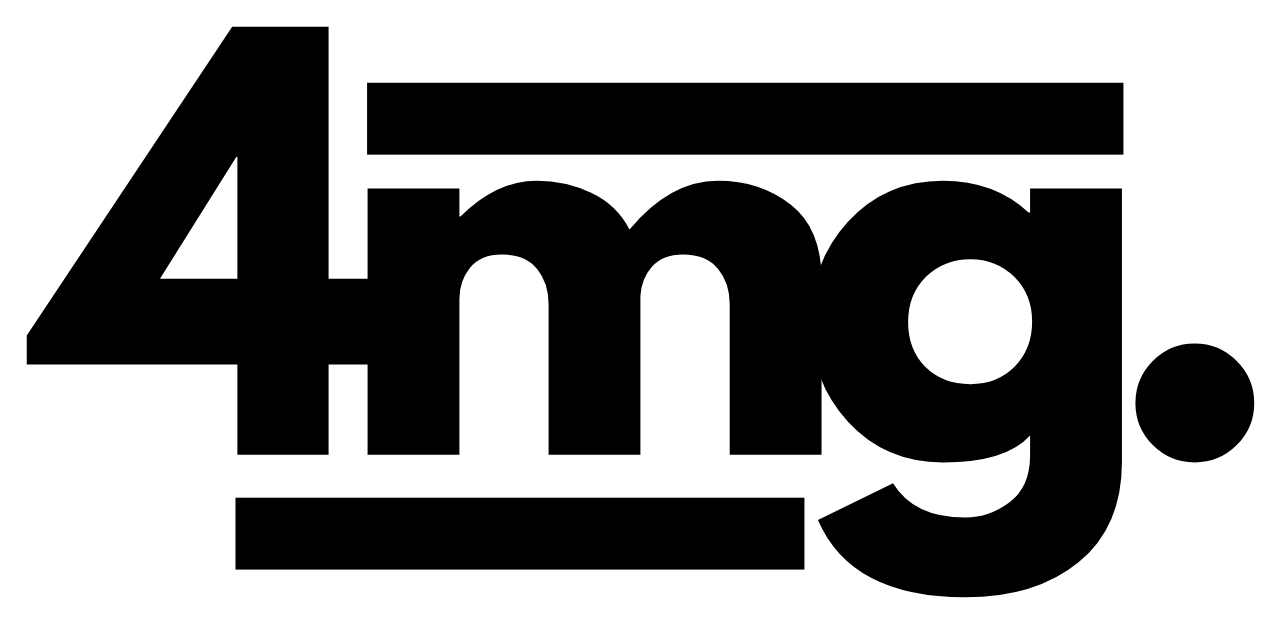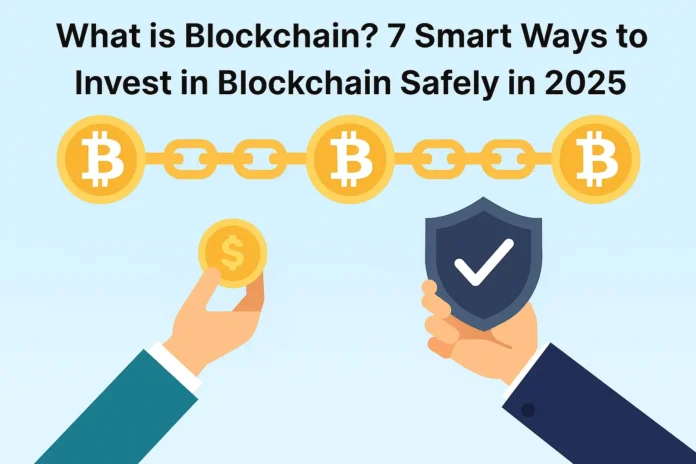- What is Blockchain? How to Invest in Blockchain Safely in 2025
- How Blockchain Works Explained Simply
- Why Blockchain Matters in Today’s Digital Economy
- Types of Blockchain Investments
- Step-by-Step Guide: How to Invest in Blockchain in 2025
- Common Mistakes to Avoid When Investing in Blockchain
- Future of Blockchain: Trends to Watch in 2025 and Beyond
- FAQs on Blockchain and Investments
- Conclusion
What is Blockchain? How to Invest in Blockchain Safely in 2025
Introduction to Blockchain Technology
Blockchain is one of the most revolutionary technologies of our time. At its core, blockchain is a digital ledger that records transactions in a secure, transparent, and decentralized manner. Unlike traditional databases controlled by a single authority, blockchain is maintained by a distributed network of computers, making it tamper-resistant and highly trustworthy.
The popularity of blockchain surged with the creation of Bitcoin in 2009, but today, its applications extend far beyond cryptocurrencies. From supply chain management to digital identity, blockchain is reshaping industries globally. For investors, it has become a lucrative field offering multiple opportunities. But before jumping into investments, it’s crucial to understand how blockchain works.
The Origins and Evolution of Blockchain
The concept of blockchain was introduced by Satoshi Nakamoto, the anonymous creator of Bitcoin. Initially, it served as the underlying technology for digital currency transactions. Over the years, it evolved to support smart contracts, decentralized finance (DeFi), NFTs, and enterprise solutions, making it one of the most versatile technologies in the 21st century.
Key Features That Make Blockchain Unique
- Decentralization – No single authority controls the system.
- Transparency – Transactions are visible to all participants.
- Security – Cryptography ensures data cannot be altered.
- Immutability – Once data is recorded, it cannot be erased.
Difference Between Blockchain and Traditional Databases
| Feature | Blockchain | Traditional Database |
|---|---|---|
| Control | Decentralized | Centralized |
| Security | Tamper-proof | Vulnerable to breaches |
| Transparency | Public/permissioned | Limited |
| Record Alteration | Impossible | Possible |
How Blockchain Works Explained Simply
Blockchain operates on a peer-to-peer network where every transaction is verified by multiple participants. Each transaction is stored in a “block,” and blocks are linked together to form a chain of records, hence the term blockchain.
The Concept of Decentralization
Decentralization ensures no single entity has full control. This removes intermediaries like banks and enhances trust.
Blockchain Mining and Consensus Mechanisms
Transactions are verified using methods like Proof of Work (PoW) or Proof of Stake (PoS). These consensus mechanisms ensure the system remains secure and functional.
Smart Contracts and Use Cases
Smart contracts are self-executing agreements coded into the blockchain. They enable automation in finance, healthcare, and logistics, reducing human error and speeding up transactions.
Why Blockchain Matters in Today’s Digital Economy
Blockchain isn’t just about cryptocurrencies. It’s a foundational technology that supports digital trust, transparency, and security in various industries.
Benefits for Businesses
- Supply chain traceability
- Fraud prevention
- Faster cross-border payments
Benefits for Individuals
- Ownership of digital assets
- Access to decentralized finance (DeFi)
- Enhanced data privacy
Challenges and Risks
- Regulatory uncertainty
- High volatility in investments
- Energy consumption concerns
Types of Blockchain Investments
Blockchain investments come in different shapes and sizes. Depending on your risk tolerance and knowledge, you can explore several avenues:
Investing in Cryptocurrencies (Bitcoin, Ethereum, etc.)
The most common way to invest in blockchain is through cryptocurrencies like Bitcoin, Ethereum, or Solana. These digital assets are highly liquid but also volatile. Investors often hold them long-term, hoping their value will increase over time.
Blockchain Stocks and ETFs
If you’re not comfortable buying crypto directly, you can invest in companies working on blockchain technology or Exchange-Traded Funds (ETFs) that include multiple blockchain-related firms. Examples include Nvidia, Coinbase, and blockchain ETFs like BLOK.
Investing in Blockchain Startups
Startups focusing on decentralized applications (dApps), blockchain infrastructure, or fintech solutions offer early investment opportunities. However, they carry high risk and require due diligence.
NFTs and the Metaverse Economy
Non-Fungible Tokens (NFTs) and virtual assets in the metaverse represent another form of blockchain investment. Though risky, they provide exposure to the future of digital ownership and entertainment.
Step-by-Step Guide: How to Invest in Blockchain in 2025
Investing in blockchain requires strategy and caution. Here’s a step-by-step approach:
Step 1: Research and Understand Blockchain Basics
Before putting in money, educate yourself about how blockchain works, market trends, and potential risks.
Step 2: Choose Your Investment Type
Decide whether you’ll invest in cryptos, stocks, ETFs, or NFTs. Each has different risk and reward levels.
Step 3: Pick a Reliable Exchange or Broker
Use trusted platforms like Coinbase, Binance, or Robinhood for crypto, and brokerages for blockchain stocks and ETFs.
Step 4: Secure Your Investments (Wallets & Security)
Always use hardware wallets or secure digital wallets to protect your crypto assets. Enable two-factor authentication (2FA) and avoid storing large amounts on exchanges.
Step 5: Diversify and Monitor Your Portfolio
Don’t put all your money in one asset. Spread investments across different blockchain opportunities to minimize risk.
Common Mistakes to Avoid When Investing in Blockchain
- Chasing Hype – Avoid investing based on social media trends.
- Ignoring Security – Weak passwords and unsafe exchanges increase risk.
- Over-investing – Never invest money you can’t afford to lose.
- Skipping Research – Lack of knowledge often leads to losses.
- Neglecting Diversification – All-in bets on one coin can be disastrous.
Future of Blockchain: Trends to Watch in 2025 and Beyond
- Central Bank Digital Currencies (CBDCs) will gain traction.
- Web3 development will bring decentralized internet closer.
- Tokenization of real-world assets like real estate and art will expand.
- AI + Blockchain integration will create smarter, more secure ecosystems.
- Green blockchain initiatives will tackle energy consumption issues.
Blockchain isn’t just the future—it’s already reshaping how we think about finance, ownership, and trust.
FAQs on Blockchain and Investments
1. What is blockchain in simple terms?
Blockchain is a secure digital ledger that records transactions across a decentralized network, ensuring transparency and trust.
2. Is blockchain only used for cryptocurrency?
No, blockchain is used in finance, healthcare, logistics, supply chains, and even government systems.
3. How much money do I need to start investing in blockchain?
You can start with as little as $10–$50 in crypto, but stocks and ETFs may require larger amounts.
4. Are blockchain investments safe?
They carry risk due to volatility and regulatory uncertainty. Always invest cautiously.
5. What’s the best way to store cryptocurrency?
Use a hardware wallet (like Ledger or Trezor) for maximum security.
6. Can blockchain fail in the future?
While individual projects may fail, blockchain as a technology is widely adopted and expected to grow.
Conclusion
Blockchain is more than a buzzword—it’s a revolutionary technology that’s transforming industries worldwide. For investors, it opens doors to cryptocurrencies, stocks, NFTs, and more. However, success in blockchain investing comes down to education, security, and diversification.
By following a structured approach and avoiding common mistakes, you can safely explore the world of blockchain investments in 2025 and beyond.


